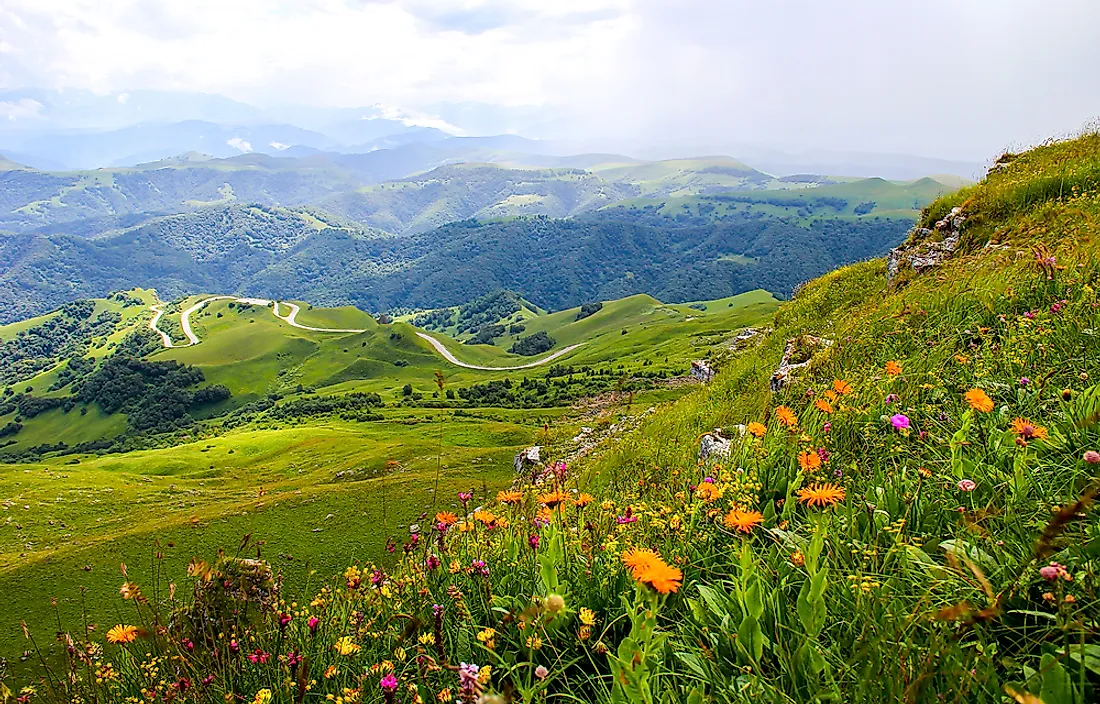What Is Terrain?

Terrain is a derivative of the word “terra” meaning earth. It refers to the horizontal and vertical versions of the land surface. To describe the terrain of the land, one uses factors such as the slope, elevation, and orientation of the land. The terrain of land affects the flow and distribution of water. Furthermore, in extensive land tracts, the terrain of land often affects the weather pattern and climate of the area. The terrain is the equivalent of bathymetry which measures the terrain of underwater surfaces.
Geomorphology
Geomorphology is the study of the formation of terrains. There are three major processes involved in the formation of terrains: geological process, erosional process, and meteorite impacts. The geological process consists of activities such as river formations, volcanic eruptions, faulting and folding, and tectonic plates’ movements. The erosional process, on the other hand, involves weathering processes on land. They include wind erosion, water erosion, and landslides. Concerning human settlement, some of these processes such as volcanic activities and landslides are detrimental to humans. In most cases, people stay away from land which is prone to experiencing these activities. Failure to do so may lead to deaths of many as has been witnessed in the past. The most recent mudslide that occurred in Sierra Leone claimed lives of an estimated number of 1,050 people. Over 5,000 people were affected by the mudslide. The third way in which terrains are formed is the meteorite impacts. Whenever meteorites fall to earth, they form craters filled with meteorite ores.
Relief
Relief is related to terrain and is the quantitative measurement of the changes in the elevation of the landscape. It is the difference between the maximum and minimum land elevations of a specific, limited area of land. Relief is significant in the study of the earth’s surface because it is related to both the slope and gradient of land surfaces. The term “relief energy” refers to the ruggedness of a terrain. The discussion of terrains is incomplete without the mention of the word “topography.” Topography is the measure of terrain or relief of land. Several techniques may be used in topography such as direct survey, remote sensing, photogrammetry, and active sensor methodologies.
Types of Terrains
There are different types of terrains. The common ones are plateau, mountain, plain, and valley terrains. Other types of terrains include open, tundra, oasis, steppe, desert, swamp, forest, marsh, river, and hill. Open terrains are flat and open grasslands while tundra refers to flat and icy wastelands. Oasis is a flat desert located near water, steppe is a cold desert, and a desert is a sandy and arid ground. Hill terrain is a gently rising land while the mountain is a steeply rising ground. Rivers are broad areas of running water, while forests are filled with many trees. Finally the marshy terrain is soft and wet ground while swampy areas are muddy and very wet grounds.
Importance of the Study Of Terrain
Firstly, the terrain of land is responsible for determining its suitability for human settlement. The flat and plain land is normally good for human habitation while steep land is not suitable for the same. Secondly, understanding terrains is significant for agricultural purposes. It enables the owners of the land to be informed about the water movement, drainage features, and watershed boundaries. Thirdly, the description of the terrain allows for soil conservation efforts such as contour plowing. Contour plowing is necessary for making sloping land plausible. Fourthly, terrains also have military importance. They assist military forces in developing strategies related their defensive and offensive attacks while at war. Mountains and forest regions are particularly good for war since the soldiers can hide from their adversaries and ambush them when they least expect an attack. The fifth significance of terrains is related to the weather patterns. Differences in elevation and the nature of the terrain influences temperature and precipitation levels. Finally, terrains affect aviation especially for aircrafts which have low-flying routes and altitudes of airports. The understanding of terrains helps them avoid an accident.











